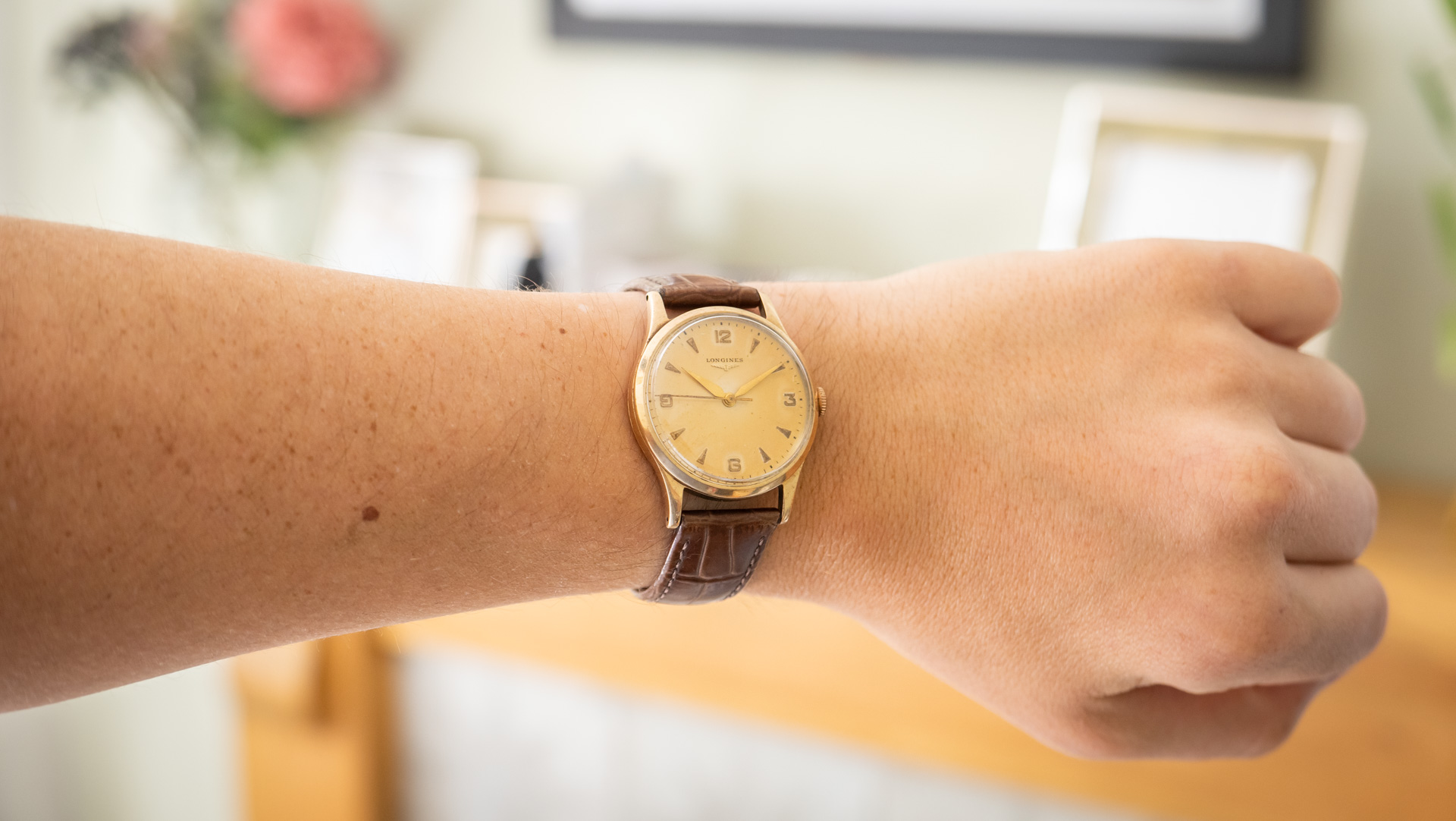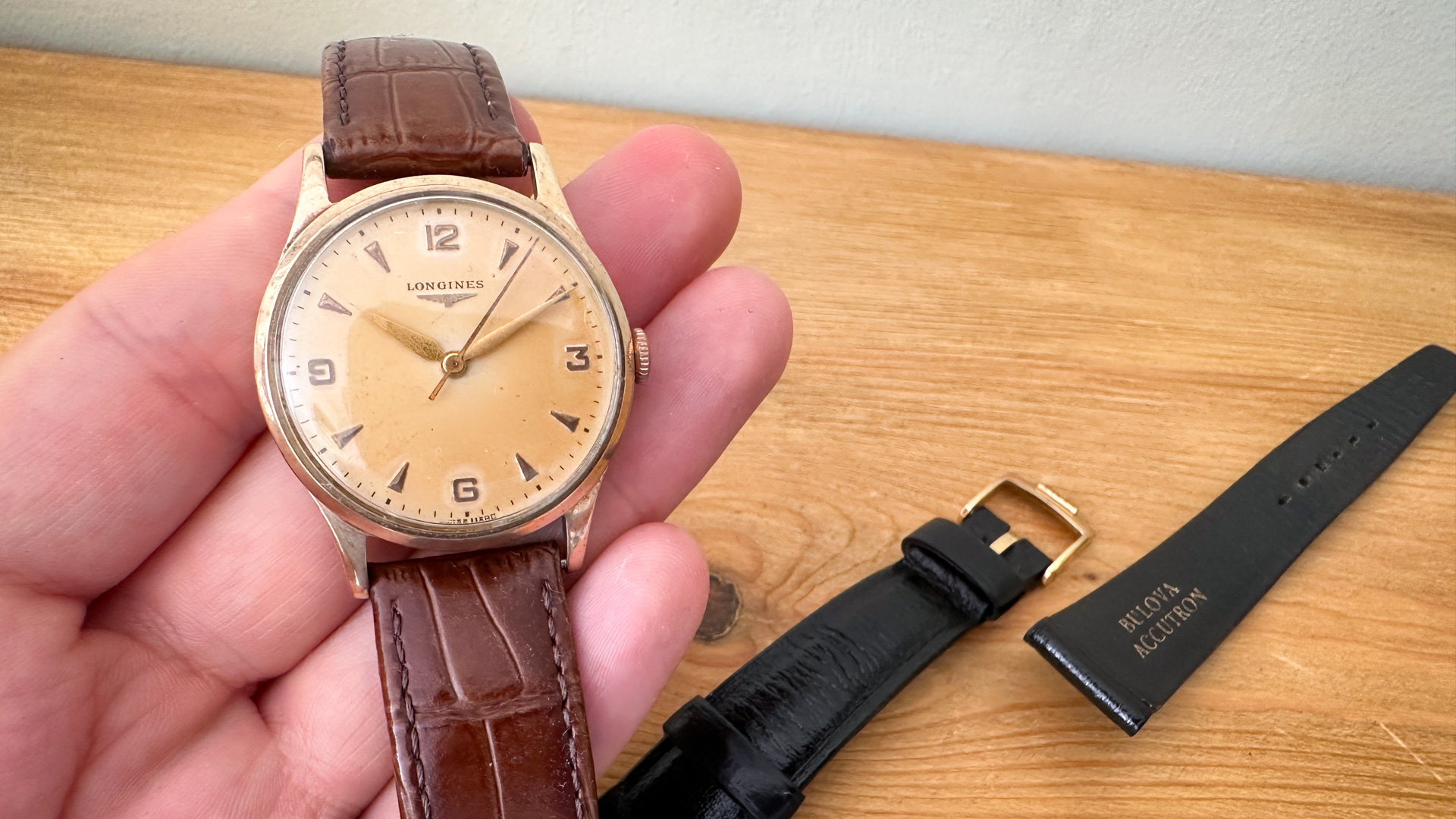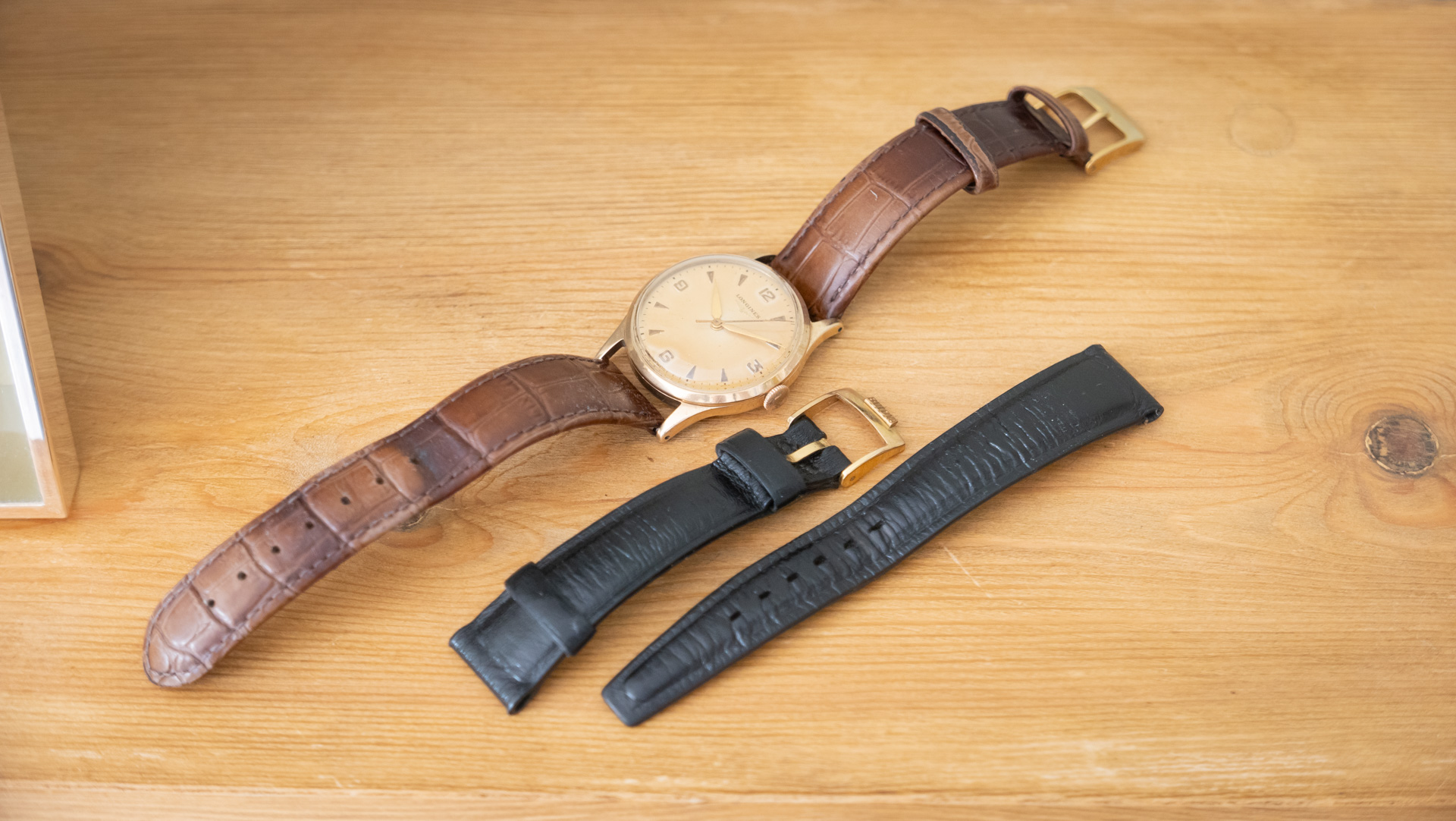
I’ve spent days now, looking at seemingly endless images of vintage Longines and Bulova watches. Sometimes I think I’ve struck gold, only to spot a tiny difference between what’s on my computer screen and what’s here in my hands.
The latter is a vintage Longines watch attached to the strap of a slightly newer Bulova Accutron. The Longines strap and Bulova case are missing, but seeing these two watches blended together only adds to the intrigue. Did my grandfather do this, potentially sometime in the 1970s, because he liked the look? Or perhaps this was a temporary substitution while the opposing case or strap had been sent away for servicing?
I’d love to ask him, but Rex died long before I was born. I’ve always known he liked watches, but only in the last few weeks have some of his possessions come to live with me. There are pens and tie clips, but the Longines/Bulova hybrid is the most interesting to me.
I’ve never cared much for vintage watches. Not because I don’t like them, but because my limited knowledge of older timepieces tells me how decades-old Rolexes are worth more than any house I could ever hope to buy. Collecting vintage watches is a pastime for someone else, I thought.

Then the Longines arrived and, while it’s probably only worth a few hundred pounds, it fascinates me. With extensive googling serving no clarity, other than perhaps how the squared font of the numerals could make this particular model quite rare, I seek out expert opinion.
I headed to the Longines boutique on London’s Oxford Street, where the salesperson was at first impressed by the condition of the watch and in particular the strap. Rare and likely “worth a bit of money on its own,” he said. He also suggested the Longines is likely from the 1950s or even late 40s. Perhaps the watch originally belonged to my great-grandfather, Jack.
At this point a serial number would be useful, but Longines of this era had them stamped on the movement instead of the case back, which remained blank and ready for a personal inscription. Once I have that number, I’ll be able to apply for a Longines certificate of authenticity.
The company has a couple of options here, starting with a free-of-charge document stating what the Longines archives know about the watch, including its serial number, a description of what the watch and its movement are, and potentially even the date and location of when it was first purchased. Above this, and for £250 plus postage and import fees, Longines offers a certificate stating the state of the watch upon examination at its Swiss headquarters and signed by the company president.
Receiving information by email takes one to two weeks, an extract from the archive takes up to three weeks, and the signed certificate can take up to three months. These are also available when watches are sent to Longines for a service – and while I’d like to do this, the watch winds up and keeps time, and a service could result in a four-figure bill.

After Longines, I headed to a couple of vintage watches specialists in London’s Burlington Arcade. Both said the dress watch was probably from the late 1940s but couldn’t say much more. Lastly, I visited the Bonhams auction house, whose receptionist took photographs and sent them to a colleague. A few minutes later, I was told it was worth maybe £300 to £500 and that I could consign it to an auction happening in August. I declined, partially relieved to know it wasn’t worth a small fortune and a large moral dilemma.
Fast forward a week and the watch has cleaned up beautifully with a jewellers' cloth bought off Amazon, and to my eyes looks more at home on a spare tan leather strap I found at home instead of the black strap it came into my possession on. It winds up easily, although I am scared of over-winding the 70-year-old movement, and keeps accurate time for somewhere between 24 and 36 hours.
Its compact case is on-trend and suits my smaller wrists, while the dial has developed such a strong patina that it almost matches the gold plating of the hands and case. Only right next to the numerals can you see its original pale hue, I imagine due to it being protected from sunlight by shadows of the raised hour markers.
The next step will be to contact Longines and request an extract from the archives. I’d love to find out who first bought the watch, where and when. I really do hope Longines has an answer, and that their database reveals the first owner was indeed my great-grandad. Maybe I’ll discover he bought it abroad, perhaps on holiday or a work trip. It might even have been a gift.
While the watch looks great and I’ll enjoy wearing it, the connection it has now formed between me and two relatives I never had the chance to meet is what’s most valuable. Every time check now has my mind racing; where has this watch been? Is it well travelled? What events is it witness to? What did it mean to those who wore it before me? And what on Earth happened to the Bulova? I don’t expect to find these answers, but knowing where and when it was first sold, and to whom, will be a fascinating start.







